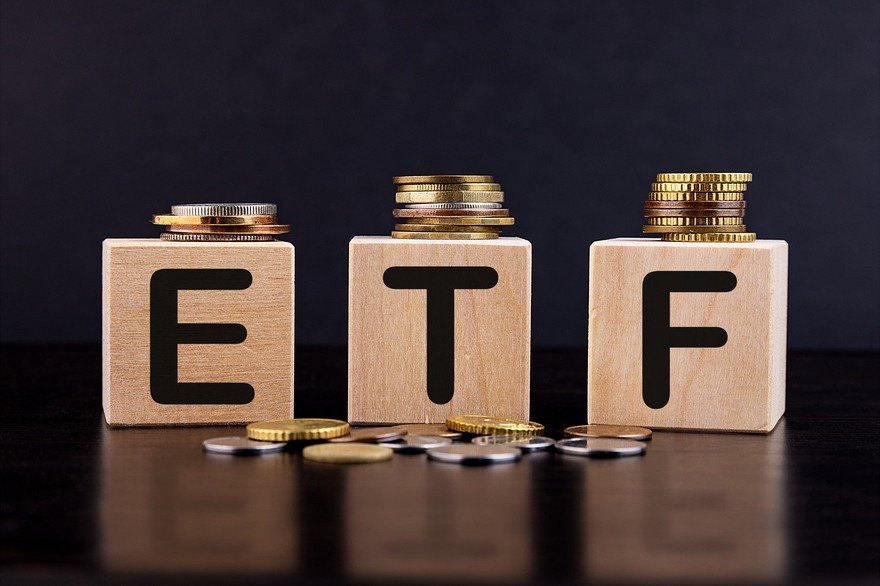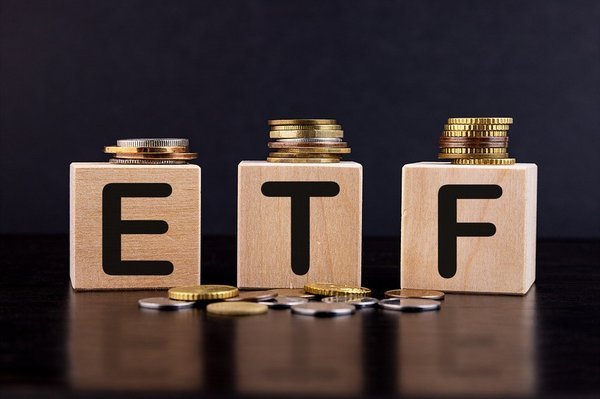The U.S. consumer price index (CPI) rose 7% in 2021, hitting a 39-year high. While CPI growth has slowed in recent years, it’s still well above the Federal Reserve’s target of about 2% annually. The fast-rising inflation rate significantly affects purchasing power since dollars aren’t stretching as far. A big driver has been central bank policy.
Consumer Price Index (CPI)
The CPI is a measurement of the average change in prices paid by urban consumers for a variety of goods and services.
The Federal Reserve Board has kept interest rates low while printing a lot of money to keep the economy afloat during the COVID-19 pandemic, devaluing fiat currency in the process. That’s leading more investors to look at ways to hedge against the continued rise of inflation.

Image source: Getty Images.
One way you can do that is by investing in precious metals, and the easiest way is through exchange-traded funds (ETFs) focused on precious metals. Here’s a closer look at some of the best precious metals ETFs.
ETF List
Precious metals ETF list in 2024
There are more than 20 ETFs focused on precious metals. Some hold precious metals stored in bank vaults. Others make a different type of investment, including derivatives such as options or futures contracts that still offer some direct exposure to metals prices.
Of the two, the best option is an ETF focusing on directly holding physical precious metals because they tend to deliver performance that matches prices reasonably well after fees. The top precious metals ETFs to consider are:
| Precious Metals ETF | Ticker Symbol | Assets Under Management | Description |
|---|---|---|---|
| SPDR Gold Shares | (NYSEMKT:GLD) | $54.8 billion | An ETF that holds physical gold |
| iShares Silver Trust | (NYSEMKT:SLV) | $10.3 billion | An ETF that holds physical silver |
| abrdn Standard Physical Platinum Shares ETF | (NYSEMKT:PPLT) | $883.0 million | An ETF that holds physical platinum |
| abrdn Standard Physical Precious Metals Basket Shares ETF | (NYSEMKT:GLTR) | $927.5 million | An ETF that holds physical gold, silver, platinum, and palladium |
| abrdn Standard Physical Palladium Shares ETF | (NYSEMKT:PALL) | $192.6 million | An ETF that holds physical palladium |
Here’s a closer look at these leading precious metals ETFs.
SPDR Gold Shares
1. SPDR Gold Shares
SPDR Gold Shares is the largest gold ETF. The fund’s sole assets are gold bullion stored in bank vaults, along with some cash. This strategy allows investors to participate in the upside of the price of gold without having to own the physical metal. That reduces costs (insurance and storage) and risks (theft or misplacement).
The ETF is highly liquid. Because it trades on a major stock exchange, holders can quickly sell their shares and convert them to cash when needed. Owners pay a relatively modest ETF expense ratio of 0.4% in exchange for these benefits. While the expense ratio has caused the SPDR Gold Shares price to slightly underperform the price of gold over the long term, it can be worth the cost compared to alternatives.
For example, many gold stocks have underperformed the price of gold over the years due to mine development cost overruns, mismanagement, and excess debt. For investors who want to roughly match the performance of the price of gold, SPDR Gold Shares is a great way to go.
iShares Silver Trust
2. iShares Silver Trust
iShares Silver Trust is the largest silver ETF. The fund holds physical silver bars stored in bank vaults. It enables investors to participate in the upside of silver prices with fewer hassles and risks of alternative investments, such as buying silver stocks or coins.
The ETF is also highly liquid and charges investors a reasonable ETF expense ratio of 0.5%. Although the fee has caused the fund to slightly underperform the price of silver over the years, it can be worth it. The ETF enables investors to roughly match the price of silver. That provides a more certain return compared to alternative investments, like silver mining stocks, which can significantly underperform due to myriad issues.
abrdn Standard Physical Platinum Shares ETF
3. abrdn Standard Physical Platinum Shares ETF
The abrdn Standard Physical Platinum Shares ETF lets investors directly invest in platinum, a key precious metal used primarily to make catalytic converters for the automotive industry. The ETF holds physical bars stored in bank vaults and is one of the few ways to invest in platinum.
Although an interested investor could buy platinum bars or jewelry made from platinum, few publicly traded mining companies focus on the rare industrial metal. Those that do mainly mine platinum along with other metals, giving their investors less direct exposure to platinum prices. These challenges of investing in platinum make the fund’s 0.6% expense ratio even more reasonable.
abrdn Standard Physical Precious Metals Basket Shares ETF
4. abrdn Standard Physical Precious Metals Basket Shares ETF
The abrdn Standard Physical Precious Metals Basket Shares ETF gives investors direct exposure to several precious metals. The ETF’s precious metals basket includes physical gold, silver, platinum, and palladium. It holds physical bars of these precious metals in bank vaults. As of late 2021, the fund’s net assets were approximately 57% gold, 26% silver, 12% palladium, and 4% platinum.
The ETF provides broad exposure to a basket of precious metals for a reasonable cost, given its 0.6% expense ratio. It’s one of the few funds providing investors diversified exposure to the top precious metals in one vehicle.
abrdn Standard Physical Palladium Shares ETF
5. abrdn Standard Physical Palladium Shares ETF
The abrdn Standard Physical Palladium Shares ETF allows investors to invest directly in palladium. Like platinum, the primary use of palladium is for catalytic converters in cars. Palladium’s other uses include jewelry and some dental fillings and crowns. Like the other ETFs on this list, this one holds the precious metal in bank vaults.
The ETF is one of the few ways to invest directly in palladium. Few mining companies focus on producing palladium. It’s not as prevalent in jewelry as other precious metals, making the ETF’s 0.6% expense ratio a reasonable cost to gain exposure to this particular precious metal.
Related investing topics
Lots of ways to invest in precious metals
There are many precious metals ETFs, giving investors many options. Most of the top precious metals ETFs concentrate on owning physical bars of a particular precious metal, giving investors direct exposure to the metal.
To gain exposure to all four main precious metals, investors have a choice: They can focus on one metal if they believe it will outperform the rest, or they can consider buying a basket of precious metals ETFs or an ETF that holds a basket of precious metals. Either way, investing in a precious metals ETF is an easy way to help hedge against the rise of inflation.
FAQs
Precious metals ETFs: FAQs
Does Vanguard have a precious metals ETF?
Vanguard does not have a precious metals ETF. However, the asset manager does have a mutual fund that allows investors to gain some exposure to the sector. It manages the Vanguard Global Capital Cycles Fund (NASDAQMUTFUND: VGPMX), which invests at least 25% of its assets into precious metals and mining securities.
Is there an ETF for rare metals?
There are ETFs for rare earth metals. The most notable ETF for rare metals is VanEck Vectors Rare Earth/Strategic Metals ETF (NYSEMKT: REMX). The fund aims to track companies involved in producing, refining, and recycling rare earth metals, as well as other strategic metals and minerals.
How to invest in precious metals?
There are many ways to invest in precious metals. You can buy and own the physical metal (e.g., gold and silver coins, gold and silver bars, and gold and silver jewelry), buy shares of a mining company focused on precious metals, or invest in an exchange-traded fund that holds precious metals mining stocks or the physical metal. Each investment option has benefits and drawbacks.

